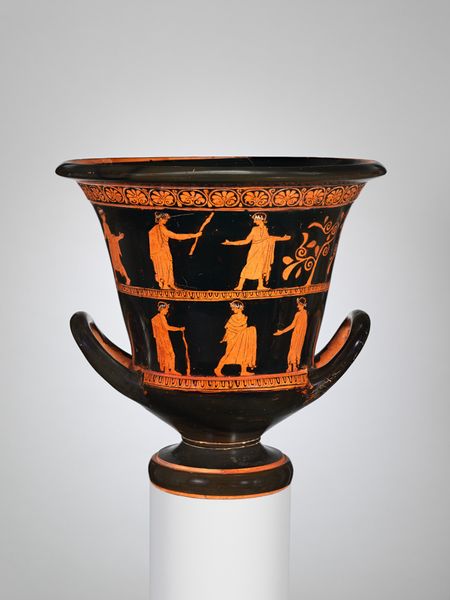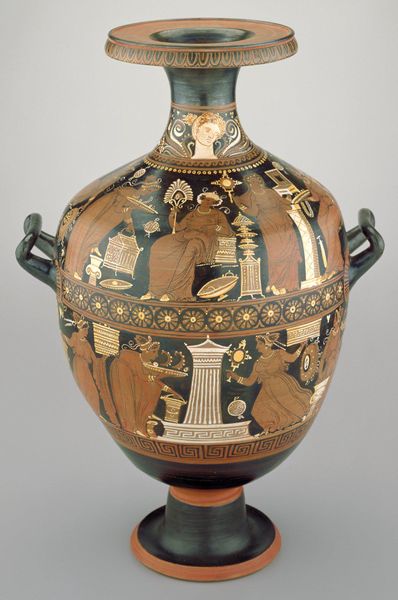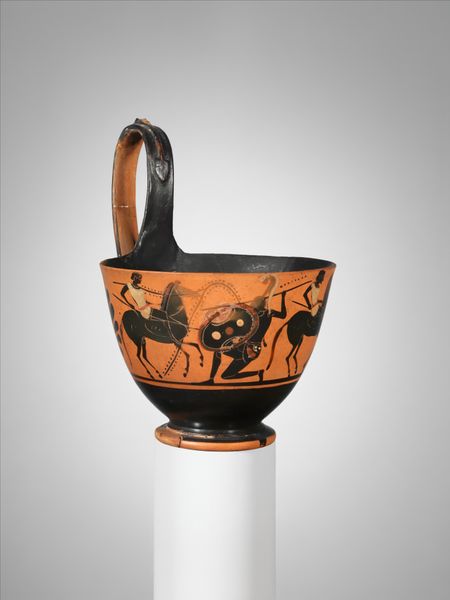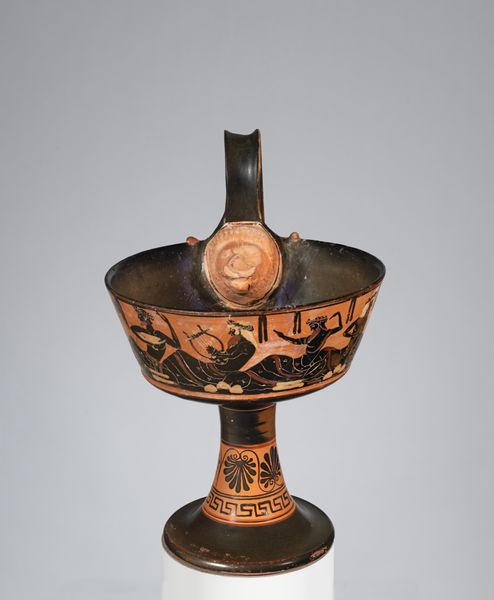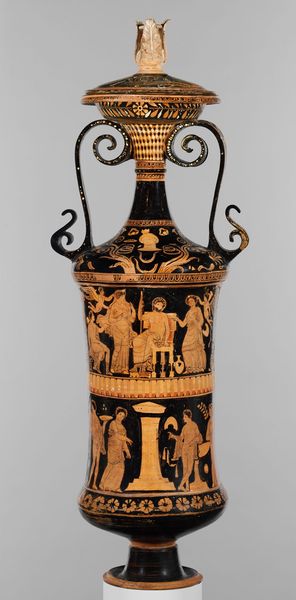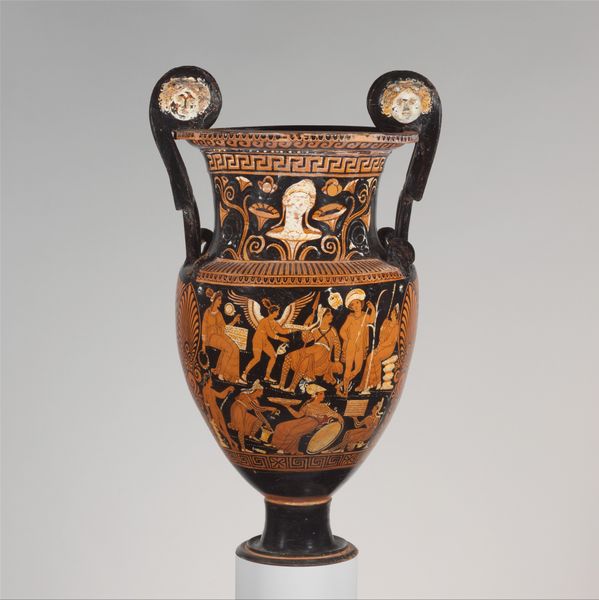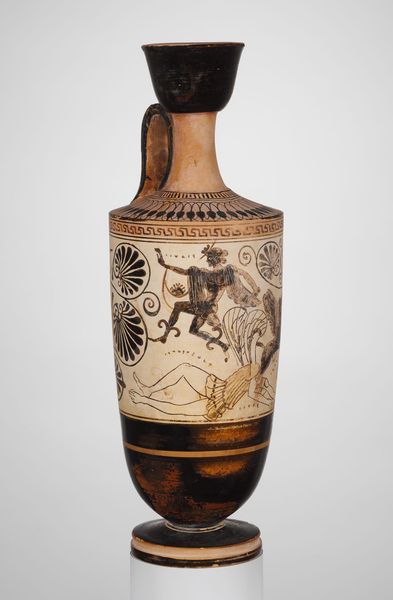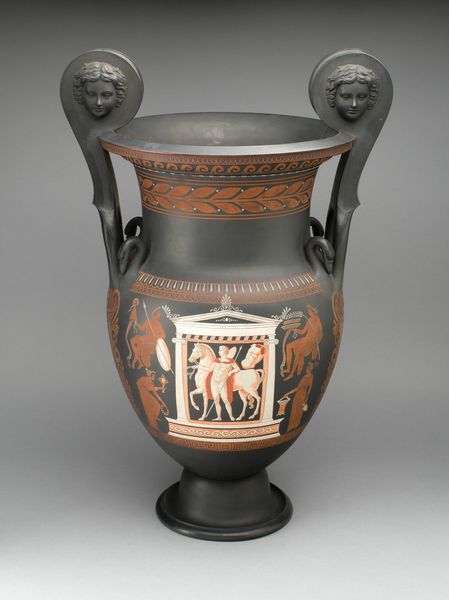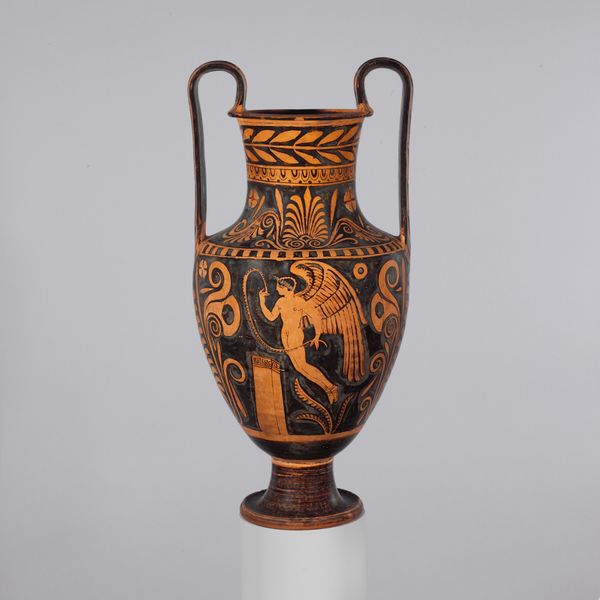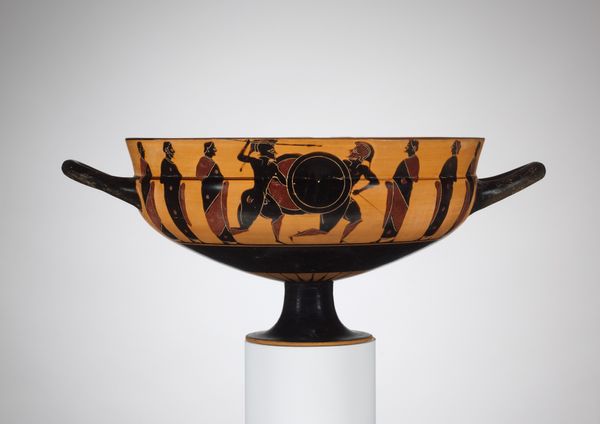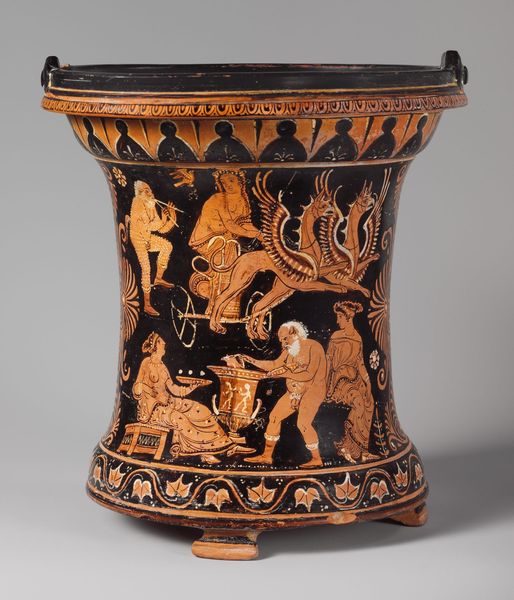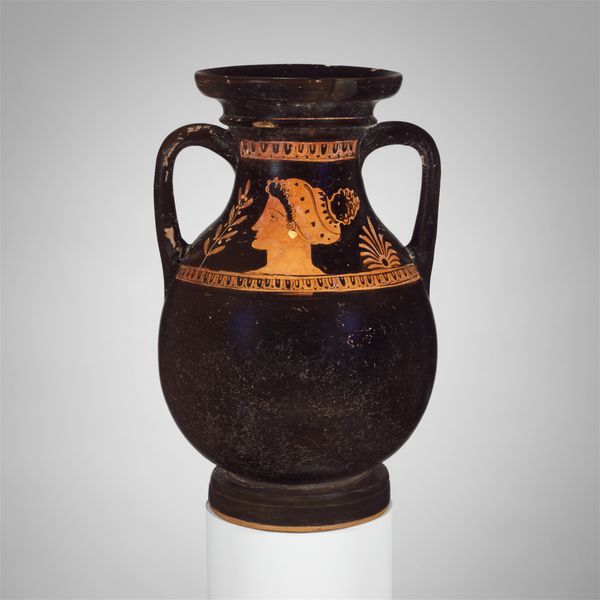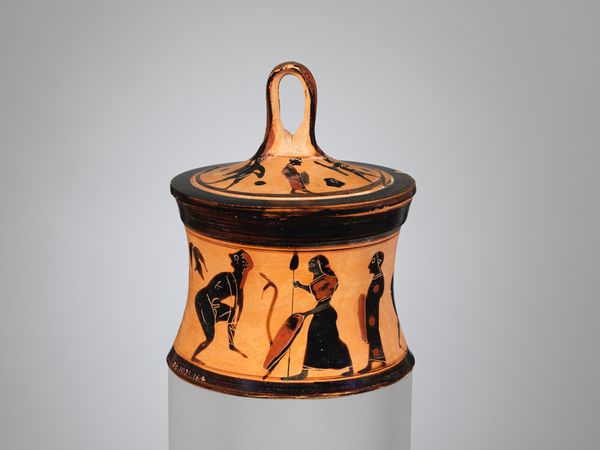
Base of a terracotta lebes gamikos (jar associated with weddings) 400 BC
0:00
0:00
ceramic
#
pottery
#
greek-and-roman-art
#
ceramic
#
vase
#
figuration
#
roman-art
#
ancient-mediterranean
#
ceramic
#
decorative-art
Dimensions: H. as restored 17 3/4 in. (45.11 cm) diameter 17 1/2 in. (44.5 cm)
Copyright: Public Domain
Curator: What a fascinating shape! The severe conical form creates a feeling of upward momentum, but its material, ceramic, and its grounding base give it a sturdy sense of stillness. Editor: Indeed. We're looking at the base of a terracotta *lebes gamikos*, a wedding jar, dating back to 400 BC. It's currently housed at the Metropolitan Museum of Art. It's visually quite striking; that terra cotta and black create a world of romantic drama, wouldn't you agree? Curator: Precisely! The interplay between the black background and the orange figures creates an absorbing tension. See how the figures are fragmented. Observe also how those fragments are strategically placed in this dark expanse to draw our eye upwards along that conic section. It directs focus, guiding interpretation... Editor: ...Towards understanding the jar’s symbolic value. The hearts and figure processions—typical adornments—speak directly to marriage rituals and the hopes for fertility and prosperity inherent within them. These weren't merely decorative choices; they were visual invocations. And perhaps even protective symbols designed to safeguard the newlyweds. Curator: It’s quite compelling how these bands, combined with the strategic placement of figural elements create spatial depth. Do you also perceive how these abstract geometries hint at underlying cultural structures? The frieze-like composition suggests narratives, but deliberately withholding context encourages a contemplation about universalities of marriage and ceremony across time. Editor: A lovely analysis! And perhaps the lack of 'completeness' speaks to the fragmented nature of memory, or of time itself. Consider that only fragments of rituals survive. What is so lovely is how our interpretation and completion of the artwork symbolically participates in those historical rituals, making us active, living vessels in the flow of culture across the ages. Curator: Indeed, by inviting viewers to consider fundamental properties through compositional strategy, the terracotta piece generates new aesthetic experiences and awareness in a cyclical rhythm. Editor: And the cultural memory embedded in this work pulses quietly, offering insights into ancient aspirations and shared human experiences around courtship and love that transcend millennia.
Comments
No comments
Be the first to comment and join the conversation on the ultimate creative platform.
